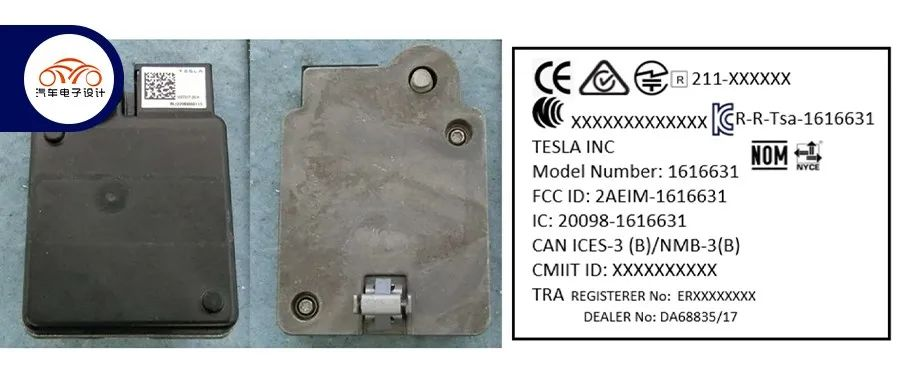Tesla’s Radar Update
In May 2021, Tesla canceled the use of millimeter-wave radar in Model 3 and subsequent models. Recently, Tesla has been updating the radar component across its entire product line. Based on current information:
-
For Model S/X produced between 2012-2016 and 2016-2021, as well as for different phases of 3/Y, Tesla used the millimeter-wave products supplied by the vendor, specifically the ASR4-B model.
-
Currently, Tesla has certified two products: a 77GHz millimeter-wave radar for front-facing automatic driving and a 60GHz millimeter-wave radar for monitoring the car cabin, which is also prepared for European regulations.
-
The biggest change here is the 60GHz mode, which has become a Tesla supplier, similar to Fob, TPMS and Bluetooth keys, shifting from the previous supplier to cooperating with chip companies and outsourcing to manufacturing companies.
I tend to believe that early mainland Chinese car millimeter-wave radar, like TPMS, has been replaced by Tesla. After cooperating with chip companies to import new technology into the car, Tesla and the chip enterprise cooperated to entrust an outsourcing enterprise to produce the new products.

Currently, the parts in Tesla’s EPC have not been updated, and the ARS 4-B, a mainland Chinese product from before 2021, is still in use. The new millimeter-wave radar has not been installed yet.
Note: The FCC ID for this product is OAYARS4B.
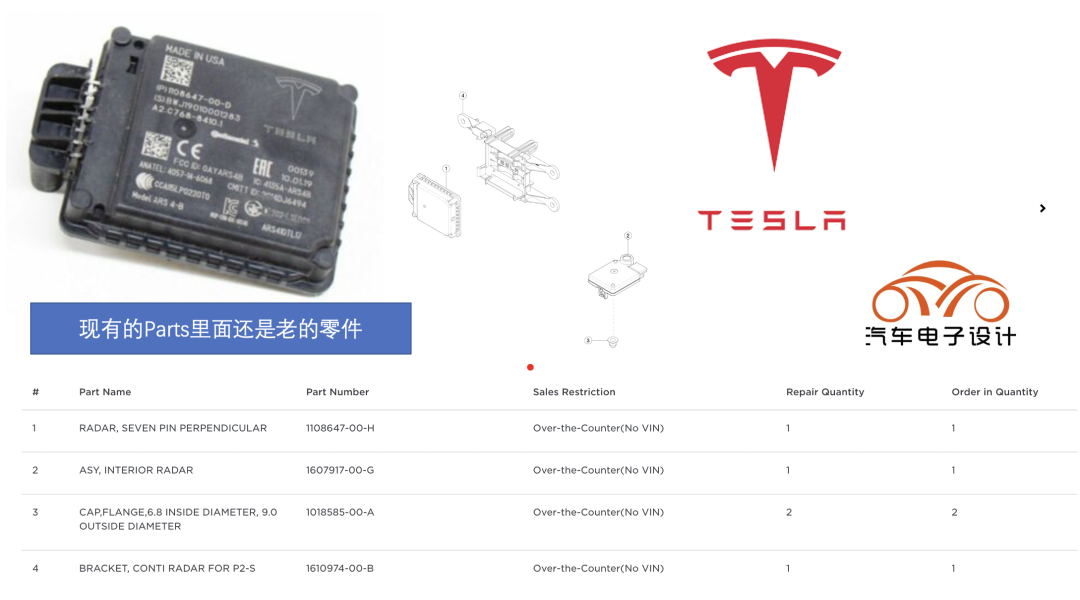
Forward-Facing Millimeter-Wave Radar
Tesla has requested a short-term information confidentiality period of 180 days (disclosable on December 4, 2022) for this product. Like most products, it is also produced in Taiwan, China, and it has also been certified by Tesla by FCC. Therefore, the difference between this and the ASR4-B produced in mainland China is that it is overseen by Tesla’s certification engineer (in other words, it was developed by the product engineer).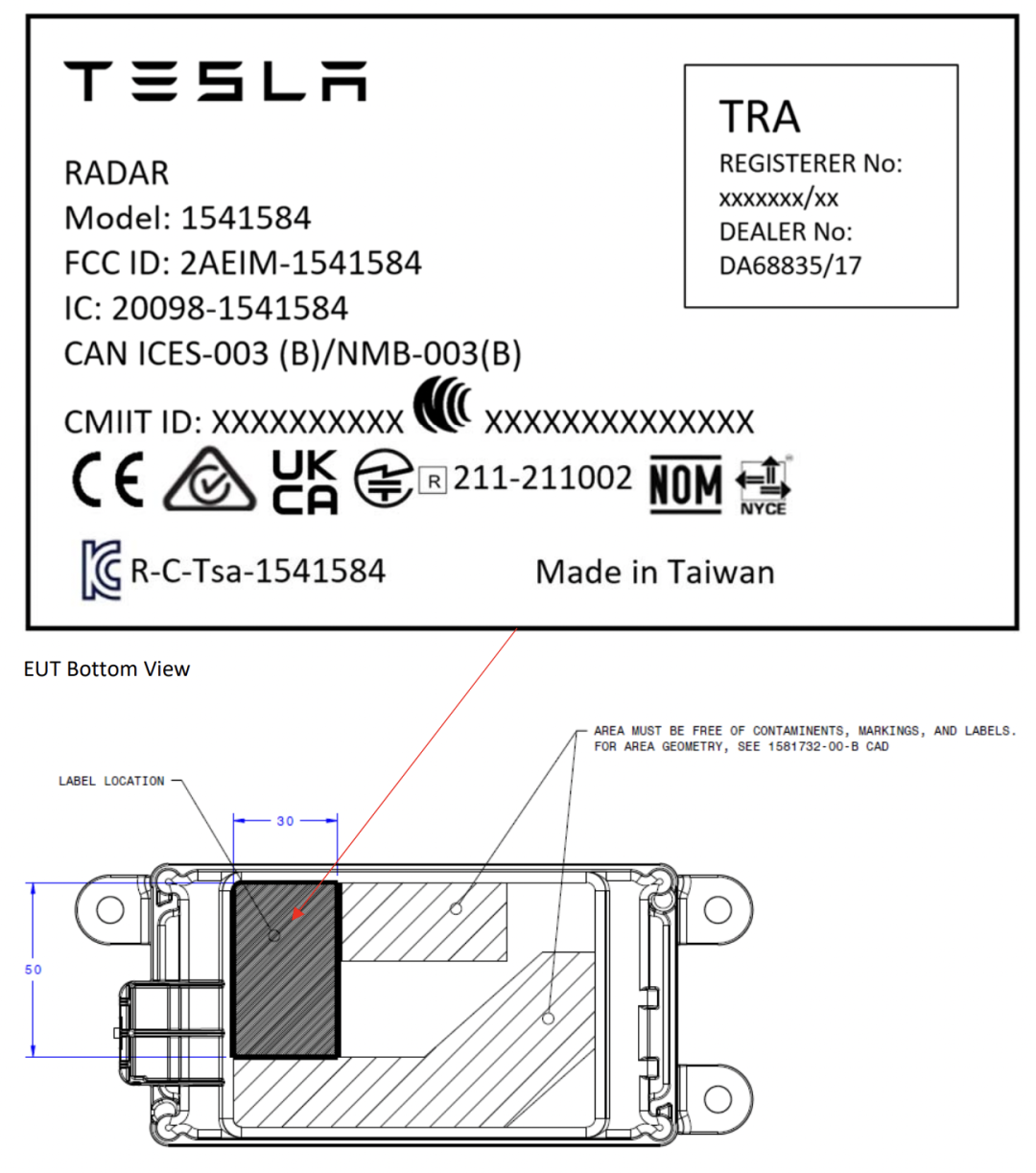
From the basic size and condition of the millimeter-wave radar, it is highly likely to be similar to that used by NIO on the new generation platform.

Currently, most millimeter-wave radars use a single transceiver, usually with only 3 transmitters and 4 receivers, and only 12 virtual channels. However, if a 4D millimeter-wave radar is used, more than 100 (192) virtual channels need to be considered, and the resolution can be improved on this basis. TI’s solution, which has a good relationship with Tesla, is also like this, using AWR2243 instead of MR3003, and TDA2x instead of FPGA. Therefore, it seems unlikely that Tesla will use 4D millimeter-wave radar, but it is highly likely to use its own 77 GHz millimeter-wave radar.

60 GHz Radar
There is nothing secretive about the 60GHz vital signs detection radar. Tesla has opened it up completely, and its label and appearance are as follows:
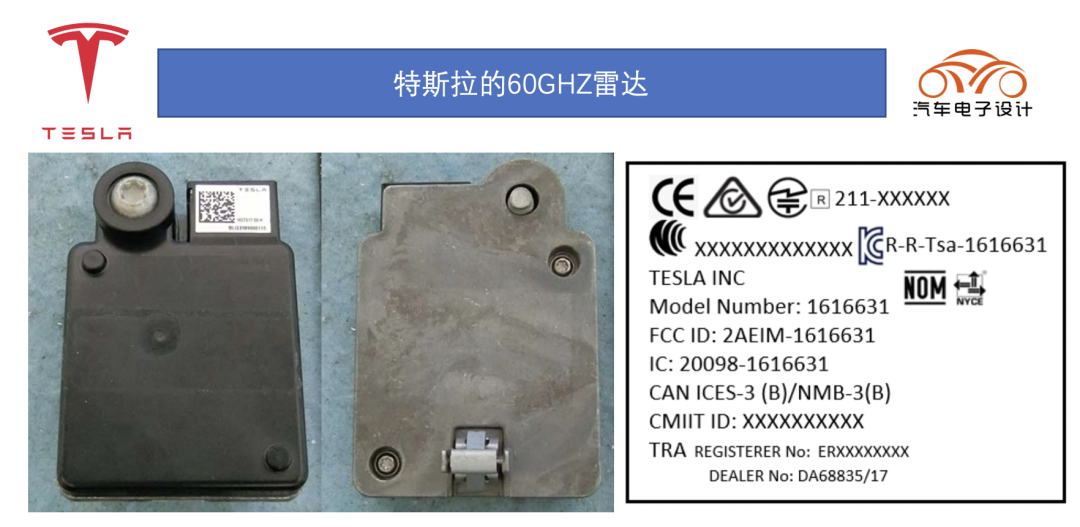
With the changes of millimeter-wave radar technology, the overall difficulty has indeed been greatly reduced, and the threshold of the entire product has been greatly lowered.
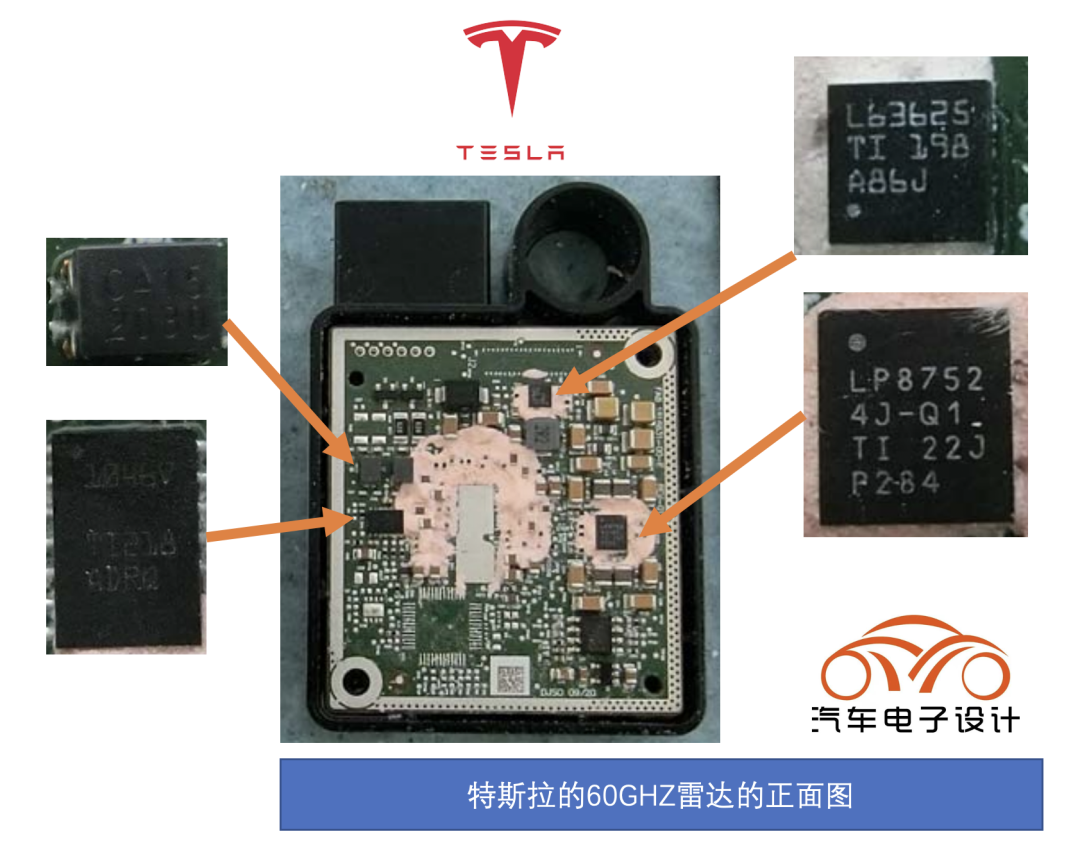
On the reverse side, we can see TI’s AWR6843, which is a single-chip 60-64GHz automotive radar sensor that integrates DSP, MCU, and radar accelerator.“`markdown

Summary: As the understanding of automotive electronic products by future automotive companies becomes deeper, and automotive chip companies continuously simplify their solutions, this link is skipped. Based on what I’ve seen, Tesla took the lead in millimeter-wave radar.
“`
This article is a translation by ChatGPT of a Chinese report from 42HOW. If you have any questions about it, please email bd@42how.com.
